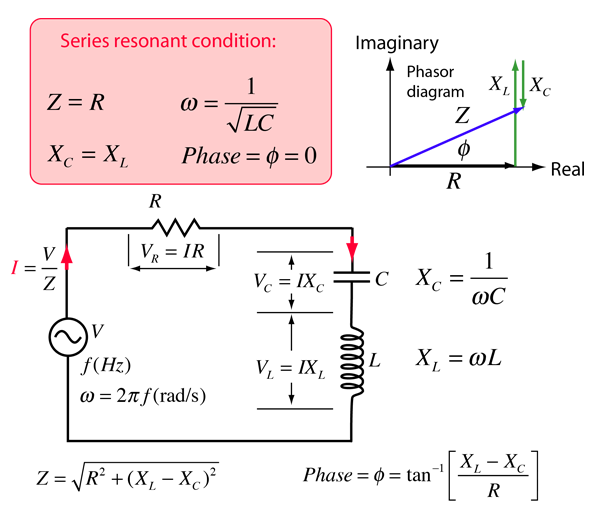The q of an individual reactive component depends on the frequency at which it is evaluated which is typically the resonant frequency of the circuit that it is used in.
Define resonant frequency of a circuit.
Electrical resonance occurs in an electric circuit at a particular resonant frequency when the impedances or admittances of circuit elements cancel each other.
The resonant frequency for an rlc circuit is the same as a circuit in which there is no damping hence undamped resonance frequency.
At resonance there will be a large circulating current between the inductor and the capacitor due to the energy of the oscillations then.
Resonant circuits exhibit ringing and can generate higher voltages and currents.
An electric circuit with inductance and capacitance chosen to allow the greatest flow of current at a certain frequency.
Series resonance circuits are useful for constructing highly frequency selective filters.
However its high current and very high component voltage values can cause damage to the circuit.
Parallel resonance which is more common in electronic practice requires a more careful definition.
If the supply frequency is changed the value of x l 2πfl and x c 1 2πfc is also changed.
The q of an inductor with a series loss resistance is the q of a resonant circuit using that inductor including its series loss and a perfect capacitor.
Resonance in ac circuits implies a special frequency determined by the values of the resistance capacitance and inductance for series resonance the condition of resonance is straightforward and it is characterized by minimum impedance and zero phase.
An lc circuit also called a resonant circuit tank circuit or tuned circuit is an electric circuit consisting of an inductor represented by the letter l and a capacitor represented by the letter c connected together the circuit can act as an electrical resonator an electrical analogue of a tuning fork storing energy oscillating at the circuit s resonant frequency.
A parallel circuit containing a resistance r an inductance l and a capacitance c will produce a parallel resonance also called anti resonance circuit when the resultant current through the parallel combination is in phase with the supply voltage.
Look it up now.
In some circuits this happens when the impedance between the input and output of the circuit is almost zero and the transfer function is close to one.
The most prominent feature of the frequency response of a resonant circuit is a sharp resonant peak in its amplitude characteristics.
A highly damped circuit will fail to resonate at all when not driven.








